Fencing probably isn’t the first thing that comes to mind when you think of all the neat features you could potentially add to your backyard koi pond.
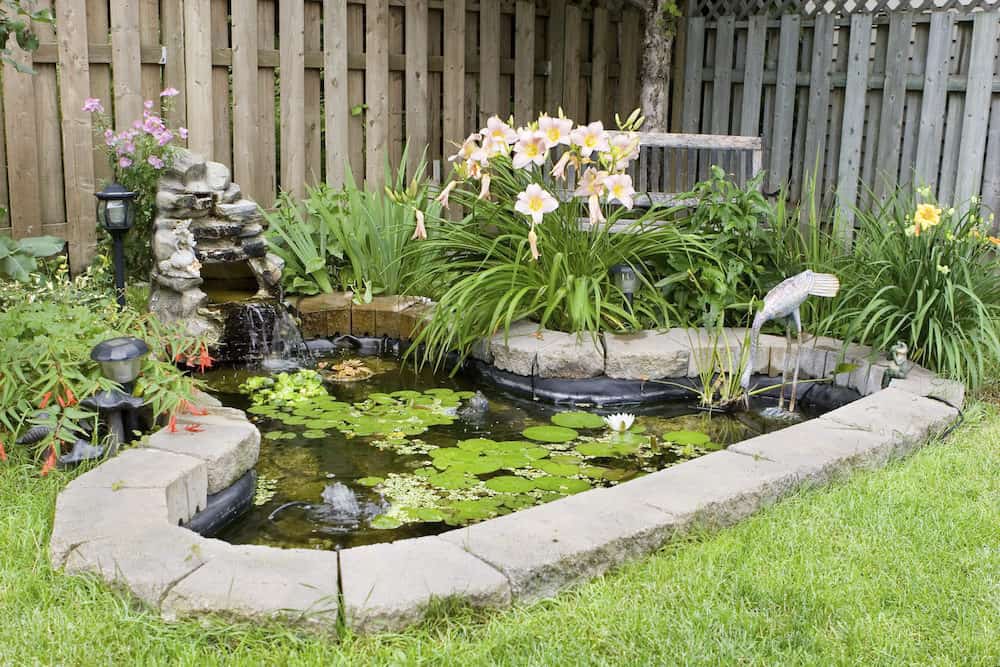
There are, however, many excellent reasons to consider fencing in your freshwater fish sanctuary-not the least of which is the safety of your koi, your other pets, and even your loved ones.
As a longtime koi enthusiast, I’m quite familiar with the kind of calamity that can occur when you leave a pond exposed.
In this article, I’ll be highlighting some of the more serious risks of going fenceless and making a case for how the right barrier can enhance not just your pond’s security but also its aesthetic value.
Note that installing a fence can be a complicated, time-consuming process. If you're not a do-it-yourselfer, I would advise that you find a professional in our koi pond companies directory to find someone who can help.
Incorporating an effective fencing solution is one of the simplest things you can do as a pond hobbyist to ensure that your koi live long, healthy lives.
A well-constructed fence will act as a deterrent to natural predators that might otherwise attempt to make a meal of your koi, such as:
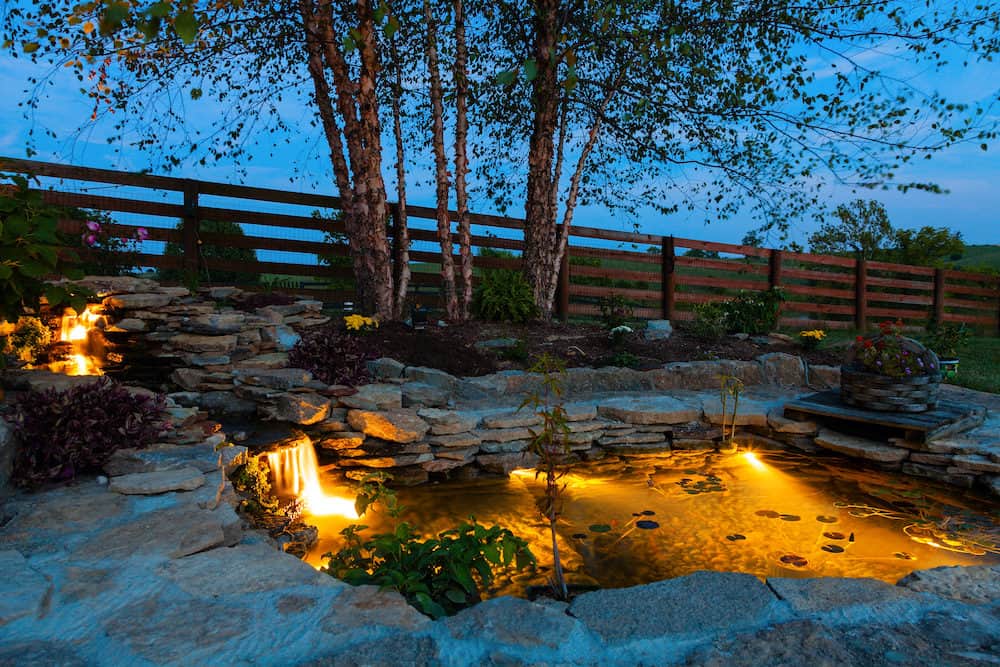
Without a fence in place, these and other intruders will be free to walk right up to your pond and see what’s for dinner.
There are a couple of reasons why fences work so well for keeping koi off-limits to predators. The first is that they obscure the invading animal’s line of sight. They can’t eat your pond fish if they can’t see them.
Taller fences can also serve as physical barriers for smaller land animals that look at koi as a tasty treat, as these creatures generally aren’t anatomically equipped to scale or leap over sheer surfaces.
Bears are the obvious exception, but let’s be real-there are very few measures that the average pond owner could implement that would successfully stop a bear if it was determined enough to get in.
Your koi aren’t the only ones that might find themselves in danger due to a lack of fencing.
Unbarricaded ponds also pose a threat to small children, especially when they’re situated in yards and gardens. For reference, the minimum recommended depth for a domestic koi fish pond is around three feet. That may seem pretty shallow to you, but it’s more than deep enough to invite disaster in a worst-case scenario.
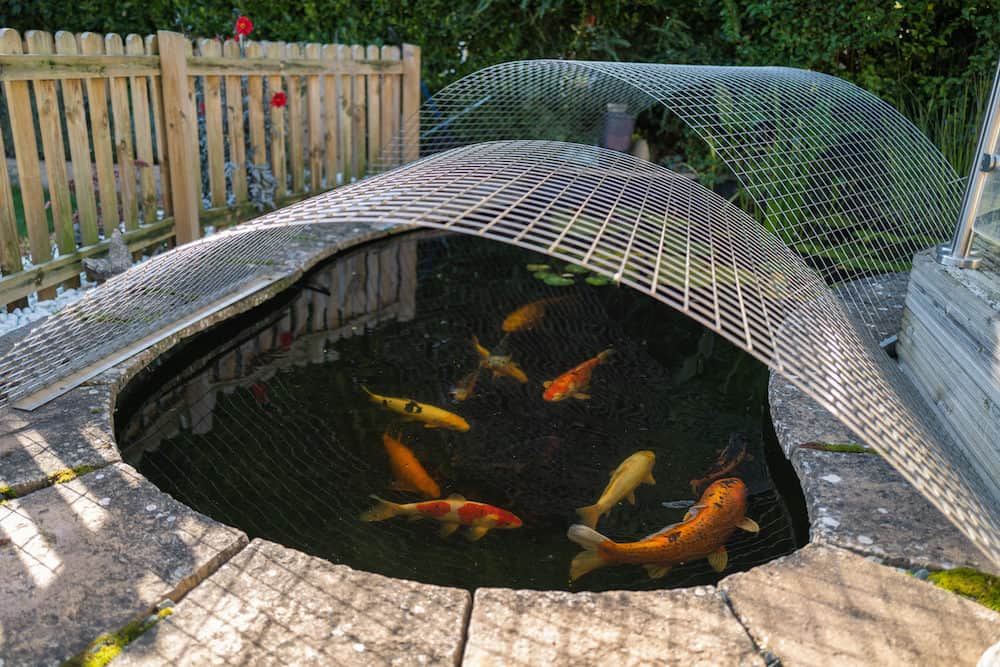
According to the CDC, drowning is the leading cause of death in children four and under after birth defects and complications. It’s also the second most common cause of death in children ages 1-14 following motor vehicle accidents.
And while they tend to be stronger swimmers than children, cats and dogs can also be at risk of drowning should they happen to fall into ponds with steep edges. Drowning aside, pets-and dogs in particular-could become seriously ill if they’re permitted to drink pond water, which is often full of disease-causing organisms like hydras, protozoa, and various bacteria.
Needless to say, pond safety should be a top priority for all responsible koi keepers.
There are no federal laws in the U.S. that require koi owners to fence in their backyard or garden ponds. State and local laws are another story, as these can differ widely from place to place.
It’s possible that your locality has fencing laws that apply to koi ponds, similar to those governing the use of swimming pools, hot tubs, fountains, and other domestic water features. In California, for example, all ponds deeper than 18 inches must be fully enclosed by a five-foot fence or wall with a self-latching gate.
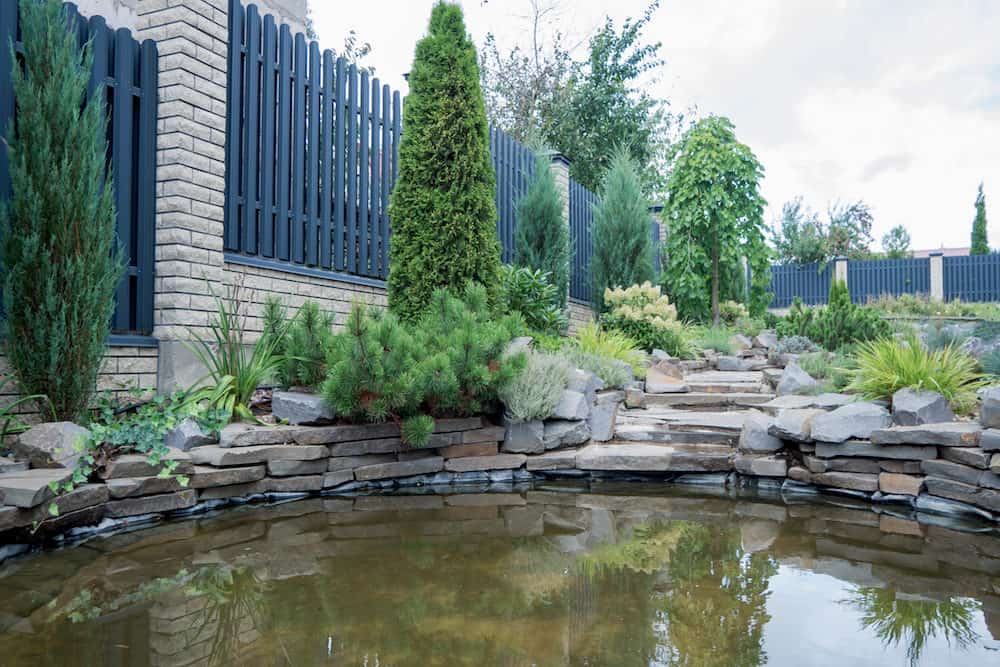
The best way to learn more about the fencing laws in your area is to run a quick search for “koi pond fence laws” plus the name of your state, city, county, town, or territory. Legal codes can be pretty complicated and aren’t always easy to find, so you may have to do some digging to unearth the specific information you’re after.
Even if you’re not obligated by law to put in a fence, I strongly recommend doing so anyway, if for no other reason than to preserve your peace of mind.
As mentioned, even shallow ponds have a high probability of becoming life-threatening hazards to small children, and curious pets may be tempted to eat or play with slowly circling koi. Unless you’re prepared to keep a close eye on your kids, cats, dogs, and other critters at all times, installing a fence can spare you a lot of trouble-and grief.
Fences don’t just keep things out. The right one can also do wonders for your pond’s presentation.
When most people hear the word “fence,” they immediately picture ugly chain link or mundane wooden picket enclosures. But fences can take many different forms, some of which offer loads of visual appeal.
An organic-looking stonework wall, for instance, can complement the natural splendor of your koi pond while also safeguarding against preventable accidents. So too can wooden and bamboo fences, which as a plus are easy to build to a variety of sizes and specifications.
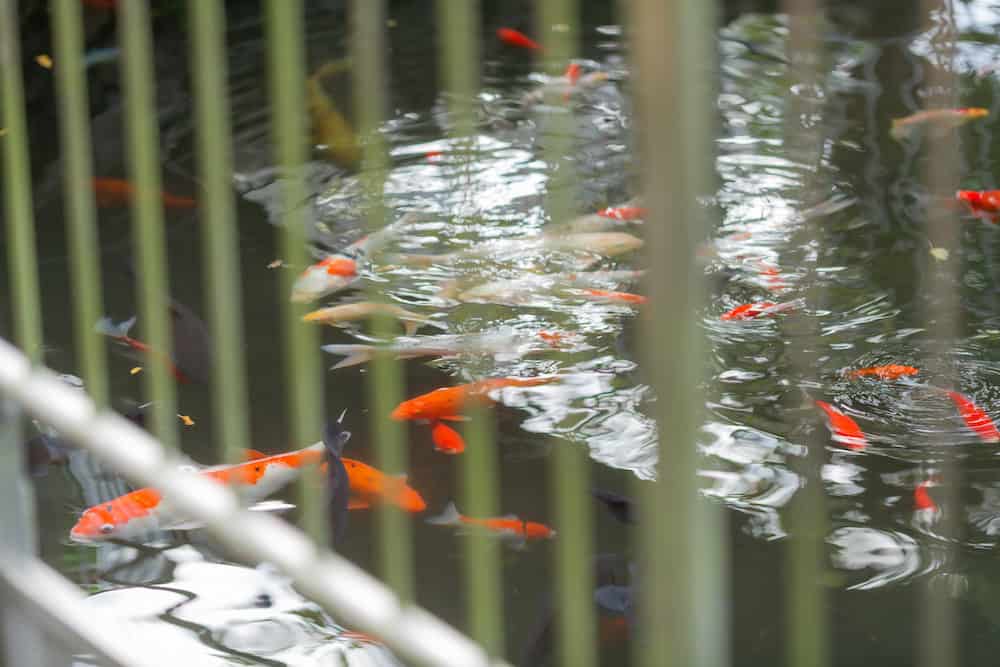
Another option is to take a different approach and use contemporary enclosure styles to create a sense of attractive contrast. You might be surprised by how charming a sleek metal panel fence or wrought-iron railing can look surrounding a peaceful koi pond. Complementary opposites like these are a great way to introduce a little yin and yang into your garden.
If you’re unable to justify the potential perils of a traditional koi pond, you may even be better off going with another type of water feature entirely, such as a pondless waterfall or stream.
Whatever solution you ultimately choose, just make sure it fulfills all of the criteria laid out in the applicable fencing laws (if any) where you live. That way, you’ll be leaving yourself with as little to worry about as possible.



